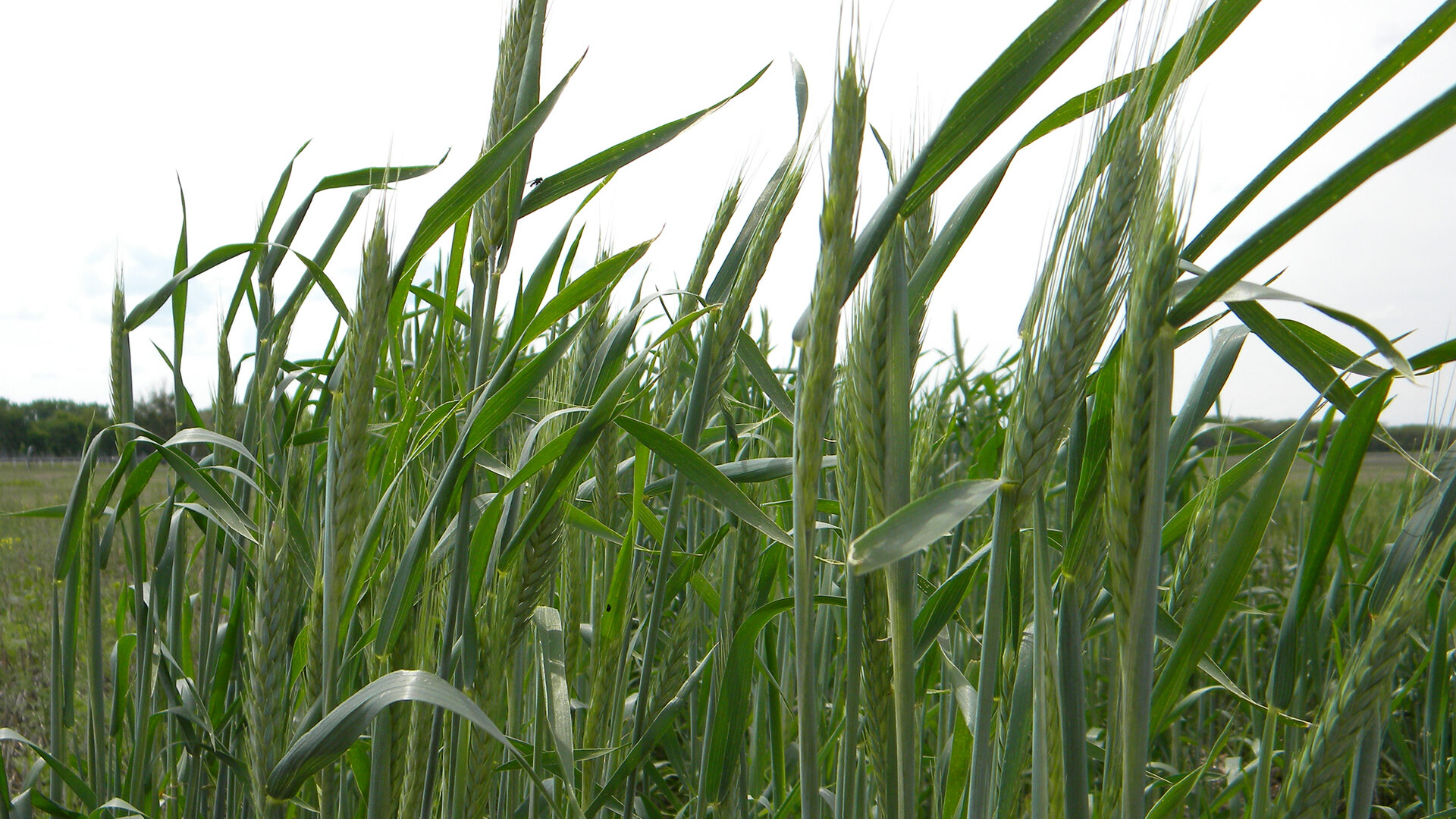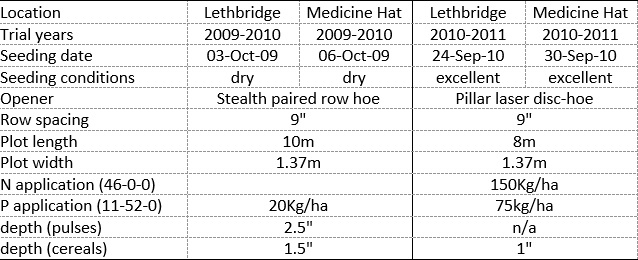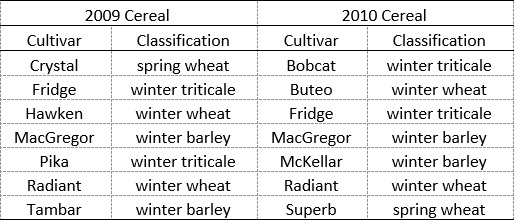Results
In 2009, the fall and spring plant counts, flowering date, TKW, % moisture, test weight and yield were found to be statistically different between varieties (P<0.01). On average, the cruiser treated plots had numerically higher yield than the untreated plots, the differences were not significantly different (LB, p = 0.09; MH p = 0.10).
The cruiser treated plots were not statistically different from the untreated plots for any other parameters including plant counts in spring, flowering date, thousand kernel weight. The statistical data analysis for the year 2009 is summarized in Table 3.
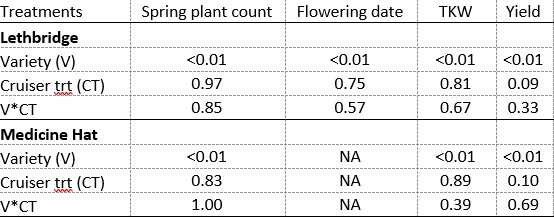
|
| Table 3: Statistical data analysis for 2009 |
In 2010, spring plant counts and yield were significantly different between varieties in Lethbridge, and spring plant counts, yield and TKW were significantly different between varieties in Medicine Hat (Table 4). Fall plant counts were not significantly different between varieties (LB P=0.5674, MH P=0.1119). In Lethbridge, Superb was the only variety that had plant survivability less than 100% (76% for cruiser treated, 73% for untreated). In Medicine Hat, both MacGregor (11% for cruiser treated, 14% for untreated) and Superb (3% for cruiser treated, 3% for untreated) had low survivability. The statistical analysis for different parameters in 2010 is summarized in Table 4.
Overall, although there was a numerical trend of increase in plant density with cruiser treated plots, the differences from control were not statistically significant (Figure 1). Similarly, the cruiser treatment led to higher yield at the Lethbridge location. However, no difference in yield was observed at the Medicine Hat location (Figure 2). The suitability of the regions to winter cropping may be affecting the performance of these treatments, in addition to other differences in soils and climate.
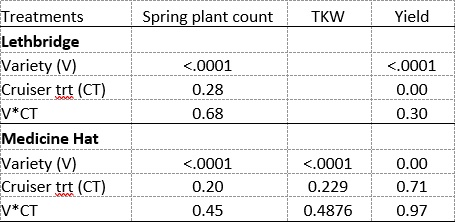
|
| Table 4: Statistical significance of treatment effects for 2010-2011 |
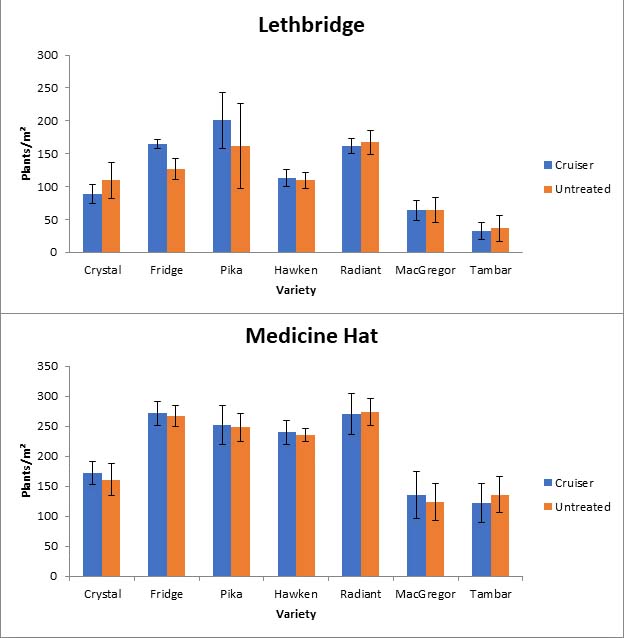
|
| Figure 1: Plant density for seeds treated with Cruiser compared to untreated control for different varieties in 2010 at a) Lethbridge and b) Medicine Hat |
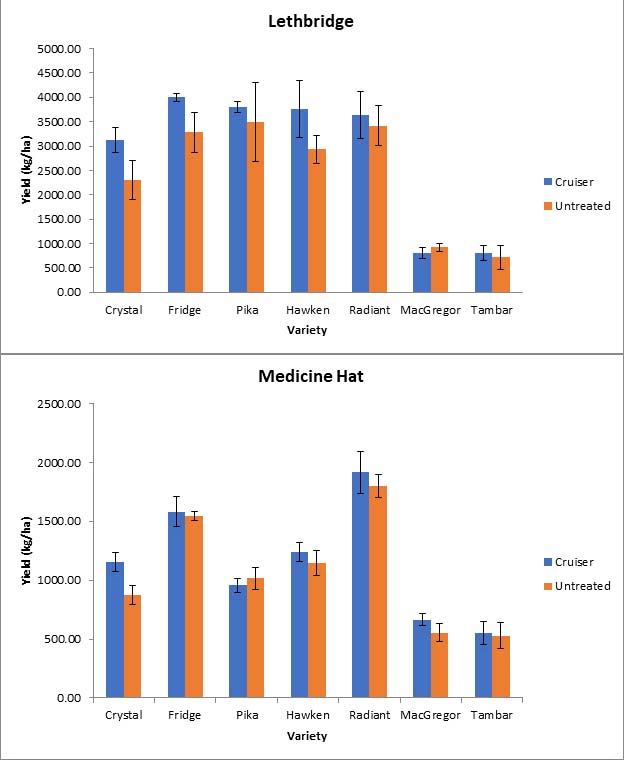
|
| Figure 2: Crop yields for seeds treated with Cruiser compared to untreated control for different varieties in 2010 at a) Lethbridge and b) Medicine Hat |
|

